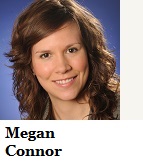By Megan Connor


If current developments are any indication, 2014 very well may be a banner year for the SBA’s Woman-Owned Small Business (WOSB) Program. Recent surveys show the WOSB Program is trending up. WOSBs accounted for 4% of all small business federal contracts in fiscal year 2012, up from 3.5% in fiscal year 2009. WOSBs won $16.2 billion in federal contracts in fiscal year 2012, up from $15.7 billion in 2009, despite a 6% overall downturn in federal spending. In fact, WOSBs accounted for 4.8% of all eligible federal contracts through the first month of fiscal year 2014. This growth no doubt will be further stimulated by the May 2013 removal of the dollar limitations for competitive contracts set-aside under the WOSB Program.
All of these expansions guarantee two consequences for participants in the WOSB Program: more competition and more scrutiny. In some ways, the WOSB Program remains untested. In the first few years of the WOSB and Economically Disadvantaged Women-Owned Small Business (EDWOSB) set-aside programs, the dollar caps on set-aside contracts limited the use of these vehicles. However, now that the limits on the maximum value of WOSB and EDWOSB set-aside contracts have been lifted, these programs surely will grow. With very few decisions from SBA’s Office of Hearings and Appeals concerning WOSBs and EDWOSBs, there is little guidance on how SBA interprets the regulations applicable to these businesses. Therefore, all WOSBs and EDWOSBs intending to pursue WOSB/EDWOSB set-asides in 2014 should make sure they are in full compliance with the WOSB/EDWOSB regulations—particularly in light of the newly implemented “presumed loss” rule, which presumes a loss to the Government for a size or status misrepresentation equal to the total amount expended on a contract obtained by misrepresentation. Below are some of the regulatory requirements for WOSBs and EDWOSBs to consider when pursuing these set-asides.
The two most basic requirements for WOSBs and EDWOSBs are that a woman must be the majority owner of the firm and a woman must control the business. Regarding ownership, at least 51% of the firm must be owned by a woman or several women. The woman’s ownership must be unconditional, meaning there are no restrictions on her ownership. And her ownership must be direct, and not through another entity like a holding company or employee stock ownership plan (although a revocable trust is acceptable).
The two most basic requirements for WOSBs and EDWOSBs are that a woman must be the majority owner of the firm and a woman must control the business.
As far as control of the firm, the management and daily business operations must be controlled by one or more women. The women who control the daily operations of the company do not necessarily have to be the same women who own at least 51% of the firm. Control means long-term decision making and day-to-day management and administration of the business operations. In other words, a woman may not be a figurehead—she must be running the daily business and make important decisions guiding the firm’s future. A woman must hold the highest officer position in the company, whatever the title of that position is. The company should be her focus (full-time, normal working hours), not a side project. And the woman (or women) must have managerial experience of the extent and complexity needed to run the business.
While “ownership” and “control” seem obvious, the nuances in how these terms are applied are where firms falter. While a woman does not need the technical expertise or the required license to control the company, she must have the ultimate managerial and supervisory control over those who have the technical expertise and licenses. However, if a man possesses the required license and has an equity interest in the business, he may be found to control the company—particularly if this man is the woman’s spouse. A woman managing a WOSB or EDWOSB should make sure her resume reflects the industry of her company.
Commonly, firms are tripped up by their own corporate documents, without realizing that these operating agreements and bylaws give negative control over the company to men. For instance, a standard operating agreement pulled off the internet may require each member of a limited liability company to sign a contract in order to bind the company. Or there could be a provision requiring the signature of each member for withdrawals and transfers from the company bank account. While these types of provisions make perfect sense in the commercial world and, frankly, for businesses pursuing full and open federal contracts, they also allow a minority member to exert “negative control” over the company. If the SBA finds such negative control, it will determine that the company does not qualify as a WOSB or EDWOSB because a woman is not controlling the business.
Besides issues of ownership and control, firms certifying as to their WOSB or EDWOSB status must also ensure that all their corporate documents on file with the SBA are kept up-to-date. There are two ways a firm may certify its status as a WOSB or EDWOSB. Either the firm may make a “modified” self-certification or the firm may obtain certification from an SBA-approved Third Party Certifier. In both cases, firms pursuing WOSB and EDWOSB set-aside contracts are required to upload their eligibility documentation to the WOSB Program Repository. Any updates or amendments to eligibility documentation must be uploaded to the Repository. For example, if a self-certifying firm amends its bylaws, the amended bylaws must be uploaded to the Repository. Before a firm submits an offer on any WOSB/EDWOSB set-aside contract, it should make sure its Repository documents are up-to-date because the contracting officer on the WOSB/EDWOSB procurement will verify all required documents are uploaded. If the apparent successful offeror fails to submit any required documents, the contracting officer cannot award a WOSB/ EDWOSB contract to that firm. Failure to upload the required documents to the Repository in a timely manner can also cause you to lose a post-award protest regarding your WOSB/EDWOSB eligibility.
A contracting officer may accept a firm’s certification as a WOSB/EDWOSB if the firm has provided all the required documents to the Repository and there has been no protest or “other credible information” that calls into question the firm’s eligibility. However, when a contracting officer has information that calls into question the firm’s eligibility or the firm fails to provide all the required documents, the contracting officer must refer the firm to the SBA for an eligibility examination. Alternatively, unsuccessful offerors may protest the status of the apparent successful offeror as a WOSB/EDWOSB. We are starting to see some WOSB/ EDWOSB protests and expect this will increase in 2014.
With the lifting of the dollar caps on WOSB and EDWOSB set-asides, attention will turn to the WOSB Programs. Plus, lawmakers are considering the possibility for WOSB sole-source awards and the SBA may debut the WOSB mentor-protégé program in 2014. These are major and necessary developments for the WOSB Programs. However, these exciting changes also promise pressure for all participants, who should ensure they are prepared for status challenges— from both competitors and the SBA.
About the Author: Megan Connor, an associate with PilieroMazza, focuses her practice in the areas of government contracts, small business administration programs, business and corporate law, and litigation. Ms. Connor represents clients in bid protests to the U.S. Government Accountability Office as well as general commercial matters in state and federal courts. She may be reached atmconnor@pilieromazza.com.
This Article was recently published in Set-Aside Alert and PilieroMazza’s First Quarter Legal Advisor Newsletter.


